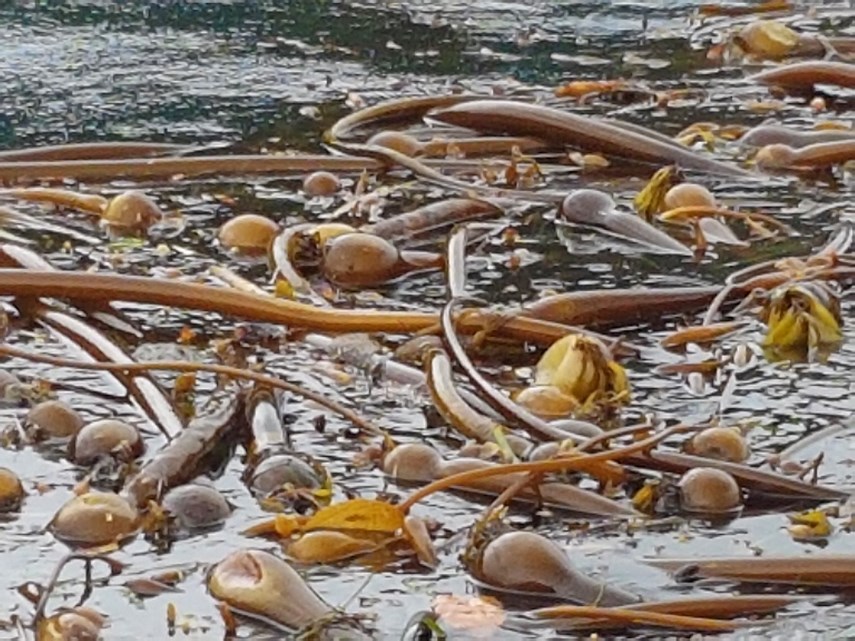Since I am writing this article while on vacation in Alert Bay, B.C., I thought seaweed would be a good topic this month.
Bull kelp, or Nereocystis luetkeana, is abundant here. The genus is Nereocystis (or, mermaid’s bladder) and it contains only one species, luetkeana.
Yesterday at the U’mista Cultural Centre I learned that kelp was traditionally used to store and carry candlefish oil and the dried stipe was used to make fishing lines. This plant has a long stipe fastened to the ocean floor by numerous heptera (little finger-like grippers) and can reach 36 metres in length from the heptera to the float.
From the float grow the blades, which can reach four metres in length and up to 20 centimetres in width. The float of the plant can have a volume of up to three litres and may contain up to 10 per cent carbon monoxide in its buoyancy gases.
This is an annual seaweed, but some can live into their second year. Between March and September, the plant will grow an average of 17 cm per day to reach its full potential of 36 m. It is reproduced by spores – the spore patch drops to the bottom where it releases the spores to grow next year’s crop.
It is found from Alaska to California, in areas of full wave exposure to sheltered areas with a good water flow – and it helps form kelp forests. The float allows the plant to find the sunlight it needs. The bull kelp biosphere shelters many species of fish, shellfish and jellyfish, and provides a feeding area for seals. It can help reduce the effects of erosion and warn boaters about shallow reefs. When the kelp washes up on the beach in the winter it provides food and shelter for sand crabs, beach fleas and periwinkles, and is a nutrient source for compost.
Research is showing that seaweed may help reduce the acidification of the ocean. Here on the West Coast the ocean is becoming too acidic for the survival of small floating mollusks called sea butterflies which are a major food source for salmon – and in turn are the major food source for orca whales. The shells of the sea butterflies are dissolving, and their wings are becoming deformed by the acidity.
On a positive note, with the recovery of sea otter populations throughout much of coastal B.C., the kelp is also freed from the threat of over consumption by sea urchins. This in turn has benefited the rocky reef ecosystems.
Heather Schamehorn is a certified residential landscape designer, educator, sustainability advocate and acupressure therapist. Contact via www.perennialpleasures.ca



